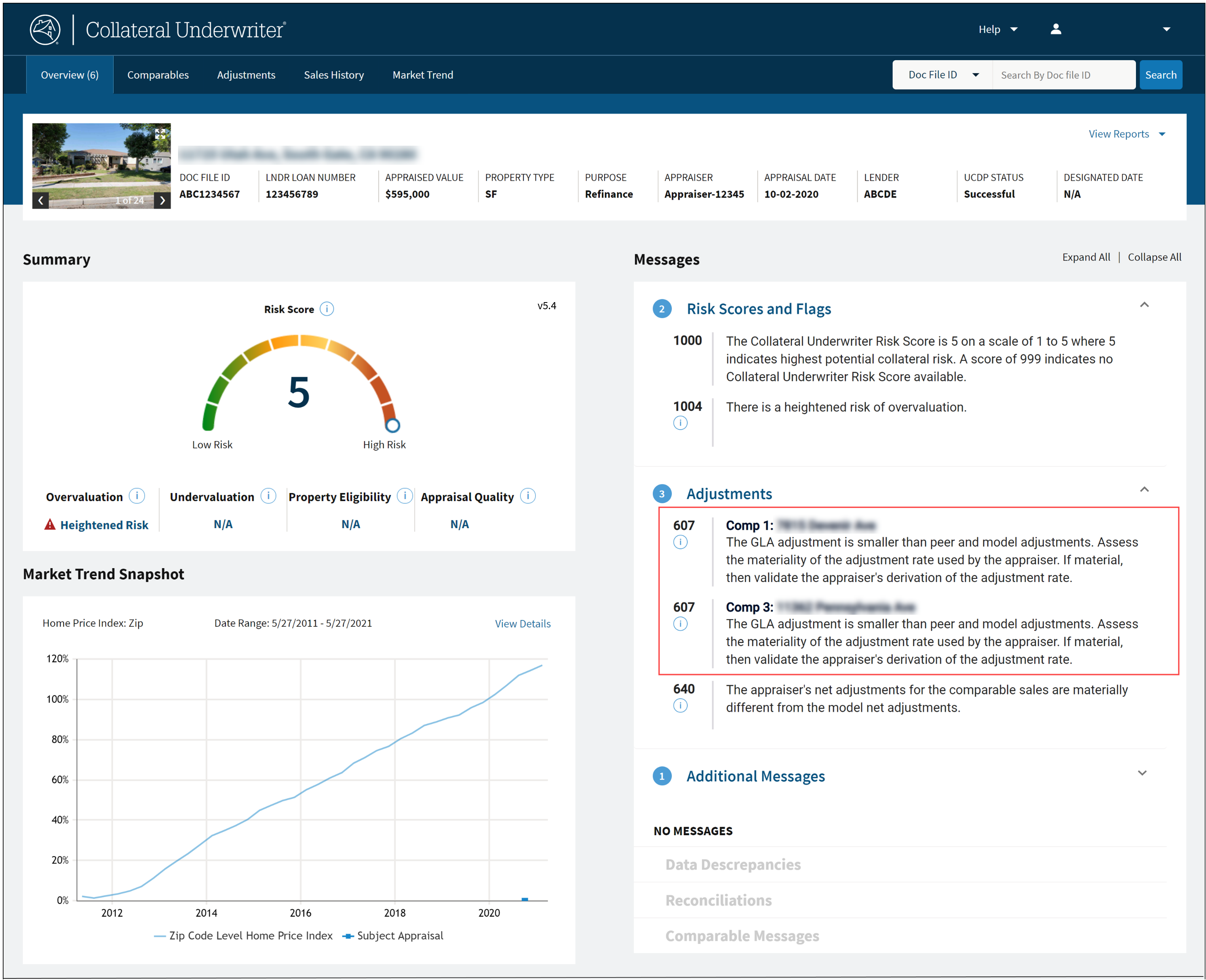My web
Single Adjustment Messages
![]()
This job aid will show how to research one sample message for a specific property characteristic. The same actions and Collateral Underwriter (CU) features shown in this example can also be used to research other property characteristics.
Single Adjustment message identify when the appraiser’s adjustment rates are significantly different from either the model-derived adjustment rates and/or adjustment rates made by other appraisers (peers) in the same market for a single standardized physical characteristic.
In this example, message 607 has been issued on the appraiser's comparables 1 and 3. This message states, "The GLA adjustment is smaller than peer and model adjustments."

Here are some ideas on how to use the CU web-based application to research these messages:
- From the Overview page select the Adjustments tab. This is a side-by-side comparison of the appraiser's adjustments and the model-derived adjustments.

- Locate the orange box that identifies the adjustment that the message was issued for.

- Next to the box we can see that CU adjusts $139/sf and $134/sf respectively. However, within the box we see that the appraiser adjusts $30/sf for GLA.
- Click the eye icon next to the Gross Living Area feature to bring up a chart showing historical peer adjustment data for GLA. We see that most other appraisers in this area adjust at a greater price per square foot rate for GLA with some adjusting over $56 per square foot, more in line with the model adjustment.

Let’s think about the potential impact on value. A lower adjustment rate produces a smaller dollar adjustment. In this case, since the comparables 1 and 3 are larger than the subject, downward adjustments are made for GLA. We can see the difference between the appraiser's adjustment is approximately $61,000 and $57,000 respectively. If the appraiser had adjusted at a rate more consistent with the adjustment rates used by other appraisers or with the model adjustments, the appraised value may have been measurably lower.
Things to Consider
In summary, CU has flagged this appraisal as high-risk because of the risk of potential under-adjustment.
It is not Fannie Mae’s expectation that the appraiser make adjustments that align with CU, and lenders should not simply instruct the appraiser to change their adjustment to match the model.
However, lenders should determine if the appraiser’s adjustments are adequately supported and reflective of market reaction. The impact to the appraised value should also be considered in terms of both the magnitude and direction of the adjustment in question. Think about how the overall credibility of the appraisal is impacted.
In some cases, it may be beneficial to seek clarification and support for some adjustments that may impact the subject’s appraised value. Another strategy to address adjustment concerns is to identify alternative comparables that do not require the adjustment in question to see what they indicate about value.
It is also important to note CU does not adhere to the widely recognized – and often misinterpreted – 15% net and 25% gross adjustment guidelines. Many believe that Fannie Mae will not accept comps with adjustments in excess of these guidelines, which is also not true. Long-standing reliance on generic guidelines has led to what Fannie Mae believes to be widespread under-adjustment by appraisers. Adjustments may be an indicator of comparability, but lower adjustments are not necessarily more accurate adjustments.